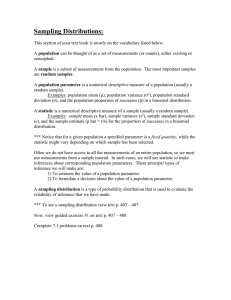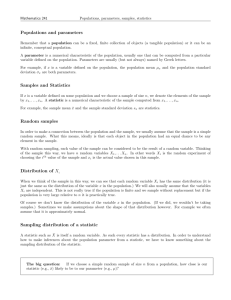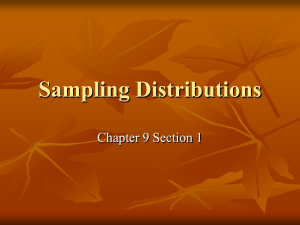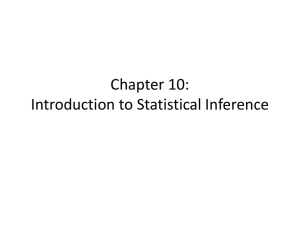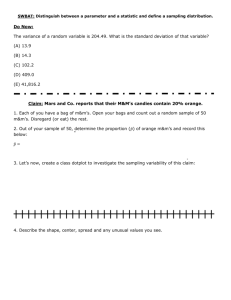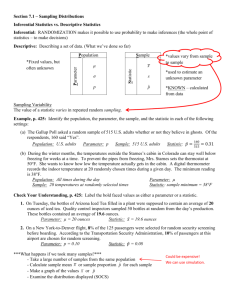Probability
advertisement
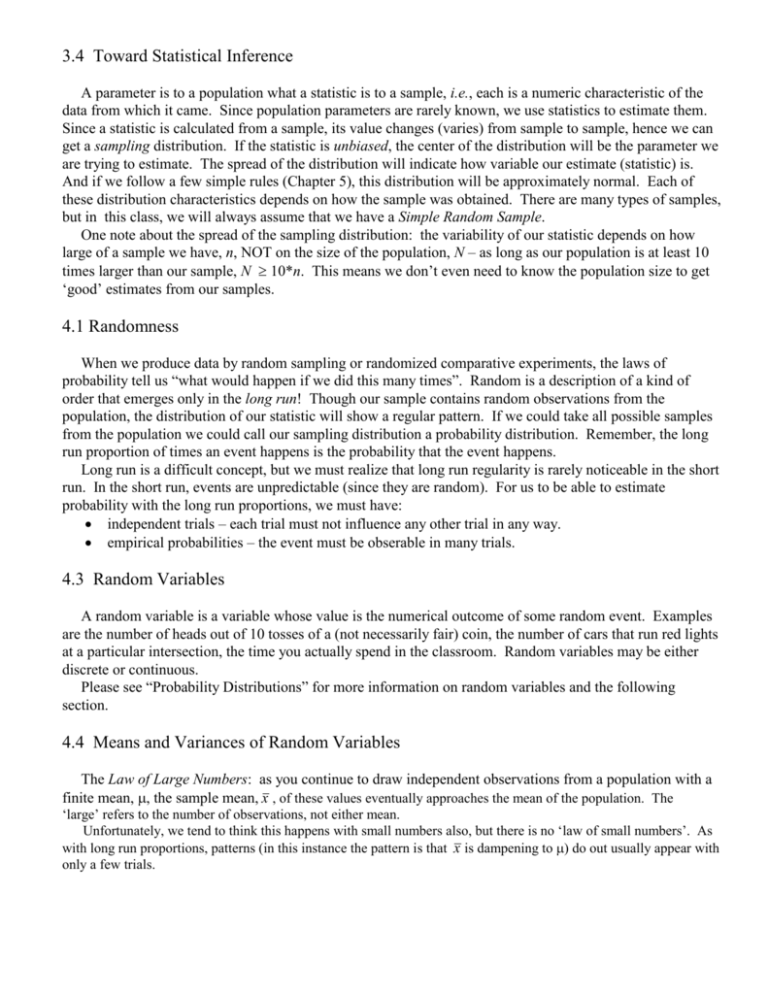
3.4 Toward Statistical Inference A parameter is to a population what a statistic is to a sample, i.e., each is a numeric characteristic of the data from which it came. Since population parameters are rarely known, we use statistics to estimate them. Since a statistic is calculated from a sample, its value changes (varies) from sample to sample, hence we can get a sampling distribution. If the statistic is unbiased, the center of the distribution will be the parameter we are trying to estimate. The spread of the distribution will indicate how variable our estimate (statistic) is. And if we follow a few simple rules (Chapter 5), this distribution will be approximately normal. Each of these distribution characteristics depends on how the sample was obtained. There are many types of samples, but in this class, we will always assume that we have a Simple Random Sample. One note about the spread of the sampling distribution: the variability of our statistic depends on how large of a sample we have, n, NOT on the size of the population, N – as long as our population is at least 10 times larger than our sample, N 10*n. This means we don’t even need to know the population size to get ‘good’ estimates from our samples. 4.1 Randomness When we produce data by random sampling or randomized comparative experiments, the laws of probability tell us “what would happen if we did this many times”. Random is a description of a kind of order that emerges only in the long run! Though our sample contains random observations from the population, the distribution of our statistic will show a regular pattern. If we could take all possible samples from the population we could call our sampling distribution a probability distribution. Remember, the long run proportion of times an event happens is the probability that the event happens. Long run is a difficult concept, but we must realize that long run regularity is rarely noticeable in the short run. In the short run, events are unpredictable (since they are random). For us to be able to estimate probability with the long run proportions, we must have: independent trials – each trial must not influence any other trial in any way. empirical probabilities – the event must be obserable in many trials. 4.3 Random Variables A random variable is a variable whose value is the numerical outcome of some random event. Examples are the number of heads out of 10 tosses of a (not necessarily fair) coin, the number of cars that run red lights at a particular intersection, the time you actually spend in the classroom. Random variables may be either discrete or continuous. Please see “Probability Distributions” for more information on random variables and the following section. 4.4 Means and Variances of Random Variables The Law of Large Numbers: as you continue to draw independent observations from a population with a finite mean, , the sample mean, x , of these values eventually approaches the mean of the population. The ‘large’ refers to the number of observations, not either mean. Unfortunately, we tend to think this happens with small numbers also, but there is no ‘law of small numbers’. As with long run proportions, patterns (in this instance the pattern is that x is dampening to ) do out usually appear with only a few trials.

